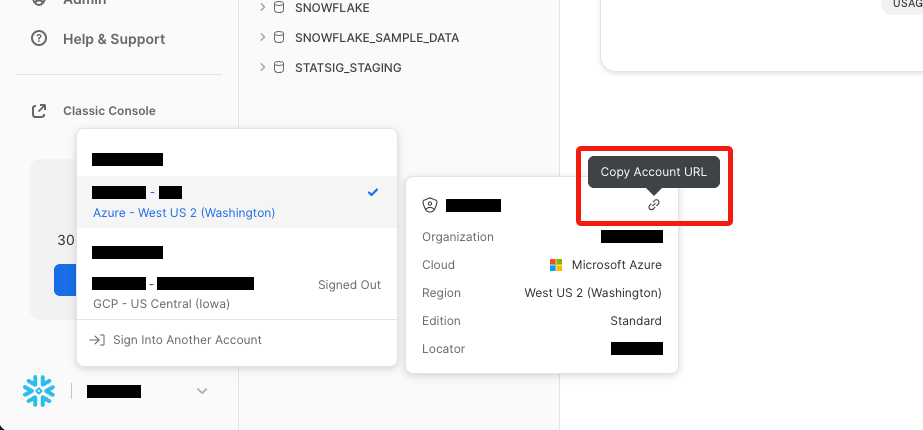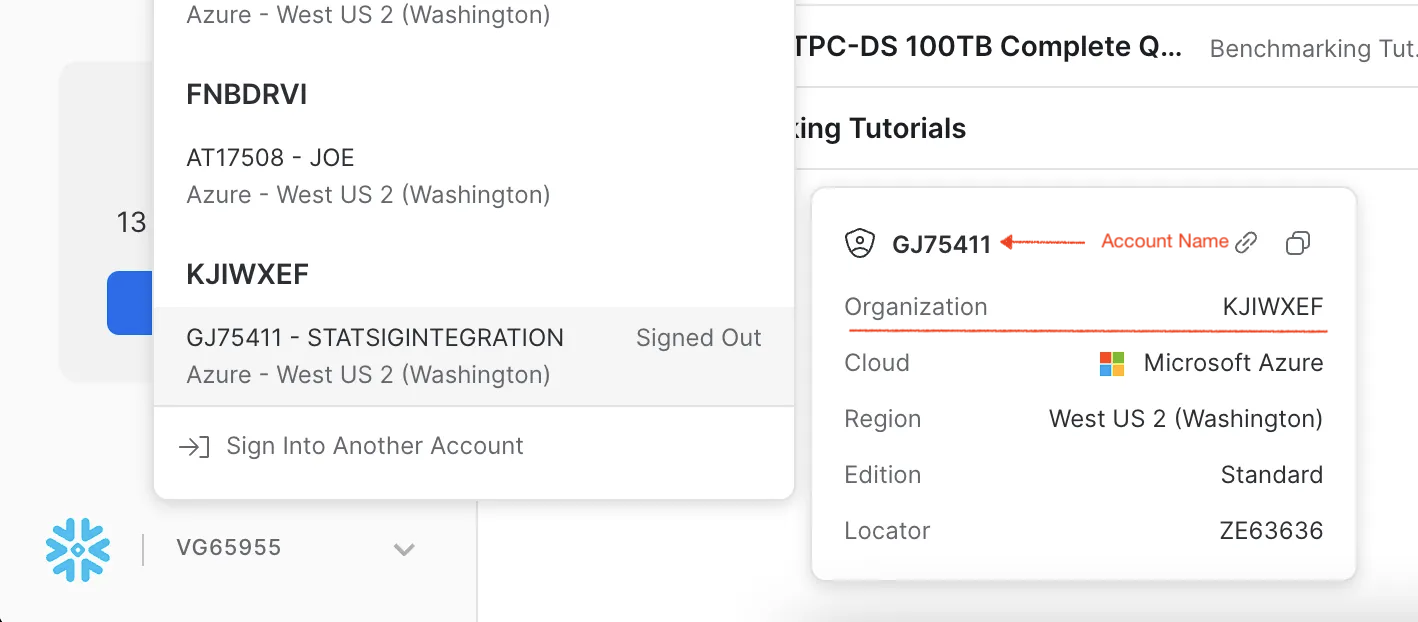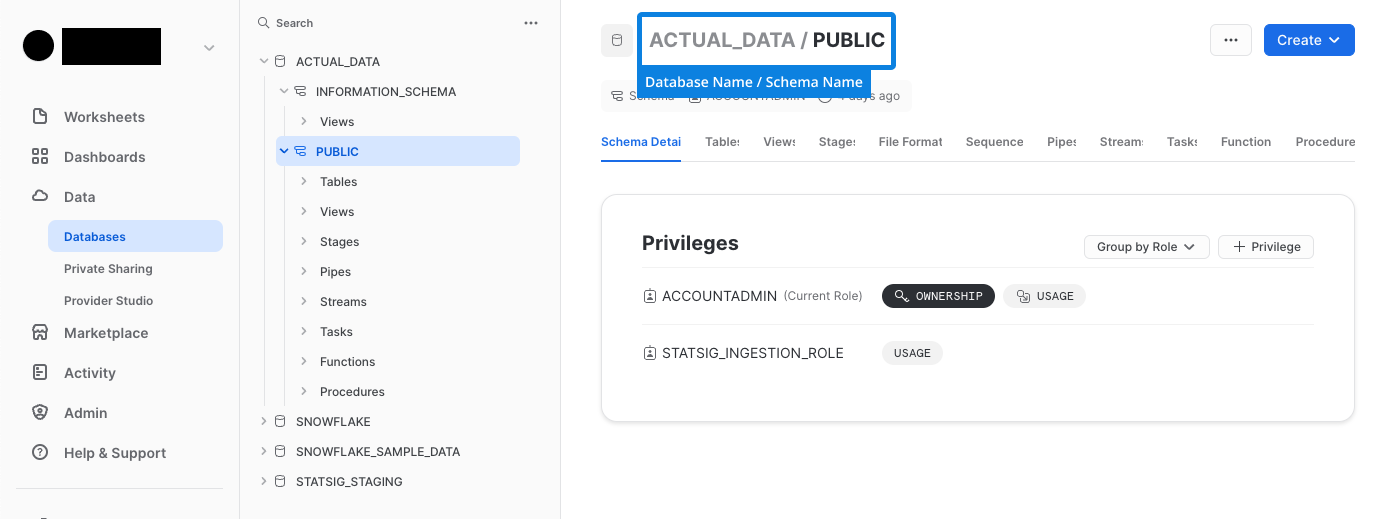BEGIN;
-- set up variable values to be used in statements later
-- make sure to configure user_name and user_password with your own values
SET user_name = '<USERNAME>'; -- REPLACE WITH YOUR OWN VALUE
SET user_password = '<PASSWORD>'; -- REPLACE WITH YOUR OWN VALUE
SET role_name = 'STATSIG_ROLE';
-- change role to sysadmin for warehouse / database steps
USE ROLE sysadmin;
-- create a warehouse, database, schema and tables for Statsig
CREATE OR REPLACE WAREHOUSE STATSIG WITH warehouse_size='XLARGE'; -- adjust based on your data size
CREATE DATABASE IF NOT EXISTS STATSIG_STAGING;
CREATE SCHEMA IF NOT EXISTS STATSIG_STAGING.STATSIG_TABLES;
-- change current role to securityadmin to create role and user for Statsig's access
USE ROLE securityadmin;
-- create role for Statsig
CREATE ROLE IF NOT EXISTS identifier($role_name);
GRANT ROLE identifier($role_name) TO ROLE SYSADMIN;
-- create a user for Statsig
CREATE USER IF NOT EXISTS identifier($user_name)
password = $user_password
default_role = $role_name
default_namespace = STATSIG_STAGING.STATSIG_TABLES
default_warehouse = STATSIG;
GRANT ROLE identifier($role_name) TO USER identifier($user_name);
-- grant Statsig role access to create warehouse and schema
GRANT USAGE ON WAREHOUSE STATSIG TO ROLE identifier($role_name);
GRANT USAGE ON SCHEMA STATSIG_STAGING.STATSIG_TABLES TO ROLE identifier($role_name);
GRANT CREATE SCHEMA, MONITOR, USAGE ON DATABASE STATSIG_STAGING TO ROLE identifier($role_name);
-- ONLY GIVE THIS LEVEL OF ACCESS in the staging schema.
GRANT CREATE TABLE, CREATE FUNCTION ON SCHEMA STATSIG_STAGING.STATSIG_TABLES TO ROLE identifier($role_name);
GRANT SELECT, UPDATE, INSERT, DELETE ON ALL TABLES IN SCHEMA STATSIG_STAGING.STATSIG_TABLES TO ROLE identifier($role_name);
GRANT SELECT, UPDATE, INSERT, DELETE ON FUTURE TABLES IN SCHEMA STATSIG_STAGING.STATSIG_TABLES TO ROLE identifier($role_name);
GRANT OWNERSHIP ON FUTURE TABLES IN SCHEMA STATSIG_STAGING.STATSIG_TABLES TO ROLE identifier($role_name);
-- grant Statsig role read access to database and schema passed in
-- do this at a table level, database level, and/or schema level
-- for data Statsig needs to access
GRANT USAGE ON DATABASE <DATABASE> TO ROLE identifier($role_name);
GRANT USAGE ON SCHEMA <DATABASE>.<SCHEMA> TO ROLE identifier($role_name);
GRANT SELECT ON ALL TABLES IN DATABASE <DATABASE> TO ROLE identifier($role_name);
GRANT SELECT ON FUTURE TABLES IN DATABASE <DATABASE> TO ROLE identifier($role_name);
GRANT SELECT ON ALL VIEWS IN DATABASE <DATABASE> TO ROLE identifier($role_name);
GRANT SELECT ON FUTURE VIEWS IN DATABASE <DATABASE> TO ROLE identifier($role_name);
COMMIT;





